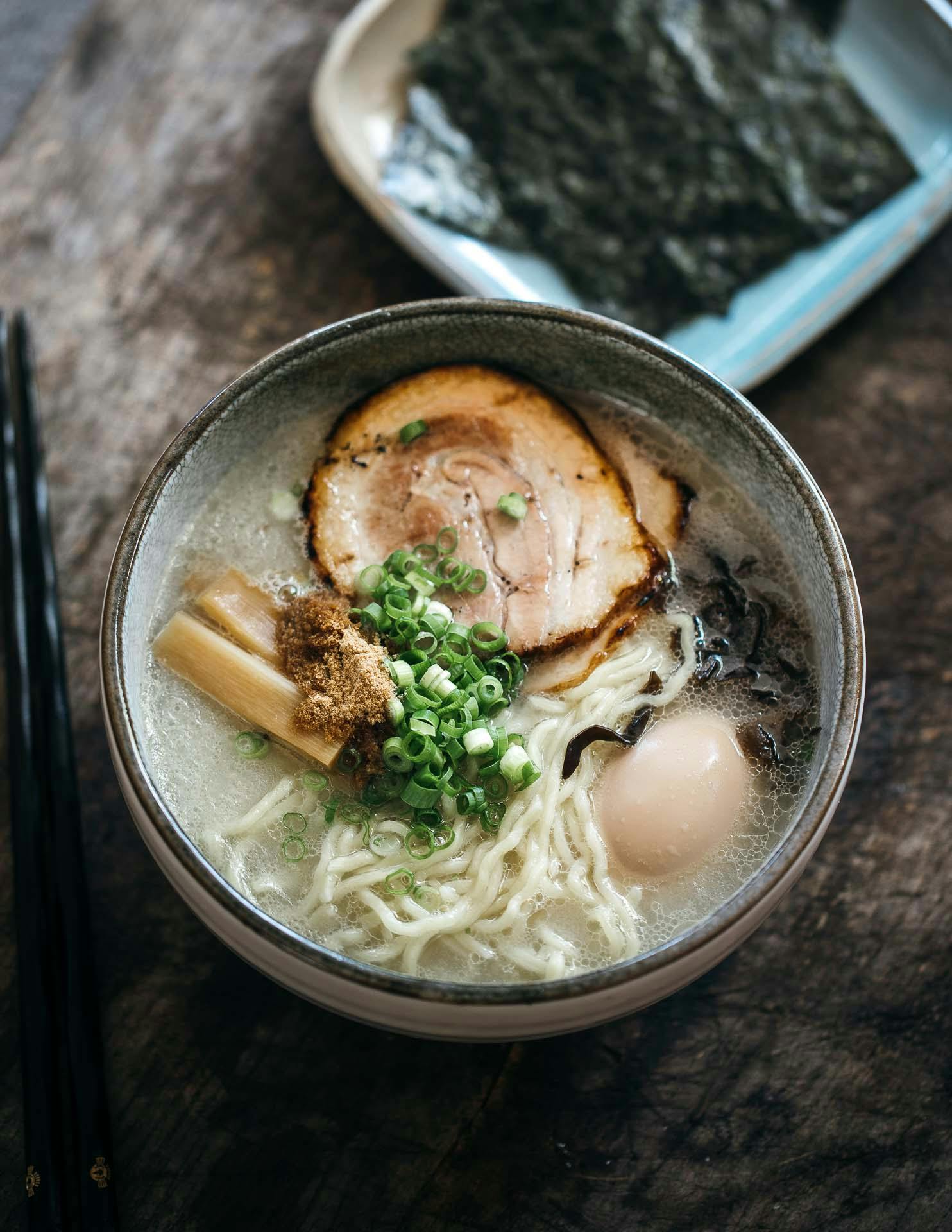How to Make Tonkotsu Ramen

Tonkotsu (pork bone) ramen is a labour of love. It can take 3 or 4 days to make - although most of that is just watching a pot boil - and you might wonder why anyone would ever go to the effort.
It is actually easier than it looks, although the first time you try to do it it will probably exhaust you completely.
As one of the four main styles of ramen (shio, shoyu, miso and tonkotsu) it's important to know how it's made, even if you never attempt it yourself.
This light style of tonkotsu is the style I prefer, although you can reduce the soup base further, add chopped fat to it etc. if you prefer the thicker, fattier versions of tonkotsu that you might have tried.
This recipe is for a shio gyokai style tonkotsu, meaning that it is salt-based and contains seafood, which is why it is very light in colour.
Ingredients
- Soup Base
- 4 kg pork bones
- 8 kg water
- Aromatic Oil
- 300 g rendered pork lard
- 200 g vegetable oil
- 70 g spring onion
- 30 g Garlic
- 1 tbsp bonito powder (see Method)
- Motodare
- 10 g dried scallop
- 10 g dried fish maw
- 10 g dried sardines, cleaned
- 2 pieces rausu kombu
- 750 ml water approx.
- 100 g salt
- 1 tsp rice vinegar
- Toppings
- chashu
- ajitama
- noodles
- kikurage – black wood ear fungus (soaked in hot water and sliced)
- spring onion, finely sliced
- menma – braised bamboo shoots
- nori, cut into squares
- bonito powder (see Method)
Method
- Soup Base
- Weigh the bones and cover with cold water. Refrigerate overnight to extract the blood from the bones and marrow. Discard the soaking water and then add twice the weight of the bones of fresh cold water. Measure the distance from the top of the water to the top of the pot.
- Bring to a simmer, using a fine mesh to skim the grey scum rising to the surface of the water, stirring occasionally. Continue until the scum rising to the top is white rather than grey. This will take about 2 hours.
- Cover the pot and boil for a further 6 hours (the water should be active and bubbling but the heat does not necessarily have to be high), topping up the water to the starting level and stirring every half hour. Remove the lid and reduce the liquid for about 4 hours until you reach the consistency you want. The more you reduce the liquid, the thicker and stronger the soup base will be.
- Strain the soup and cool rapidly by stirring in a bath of iced water until it is room temperature. Cover and refrigerate overnight.
- Motodare
- Make the tare, add the dried seafood, kombu and cold water to a non-reactive container and refrigerate overnight.
- Transfer to a saucepan and heat over very low heat for about 1 hour until just warm to the touch. Remove the seafood and measure the volume of dashi produced.
- Add salt in the ratio of 1:5 (i.e. 100 g salt for 500 g dashi) and stir over heat until the salt is fully dissolved.
- Add the vinegar and set aside.
- Aromatic Oil
- To make the bonito powder, blend 1 cup of dried bonito flakes to a fine powder. Combine all the ingredients in a saucepan and bring to a boil. Allow to cool and strain.
- To assemble the ramen, follow the instructions in the video.
Tips
- There is a lot of liquid to manage here so it's worth having two large pots the same size, and also clearing enough space in your fridge to fit one of them before you even start.
- If you prefer a thicker tonkotsu you can reduce the soup further, or thicken it with the addition of simmered backfat or use a stick blender to emulsify in some additional bonito powder.
- This recipe is a basic recipe. You can of course add vegetables, chicken and other ingredients to the soup base if you prefer.

